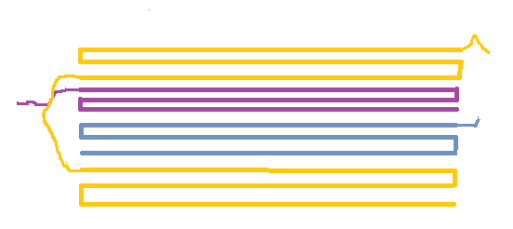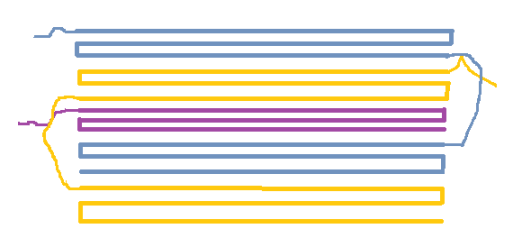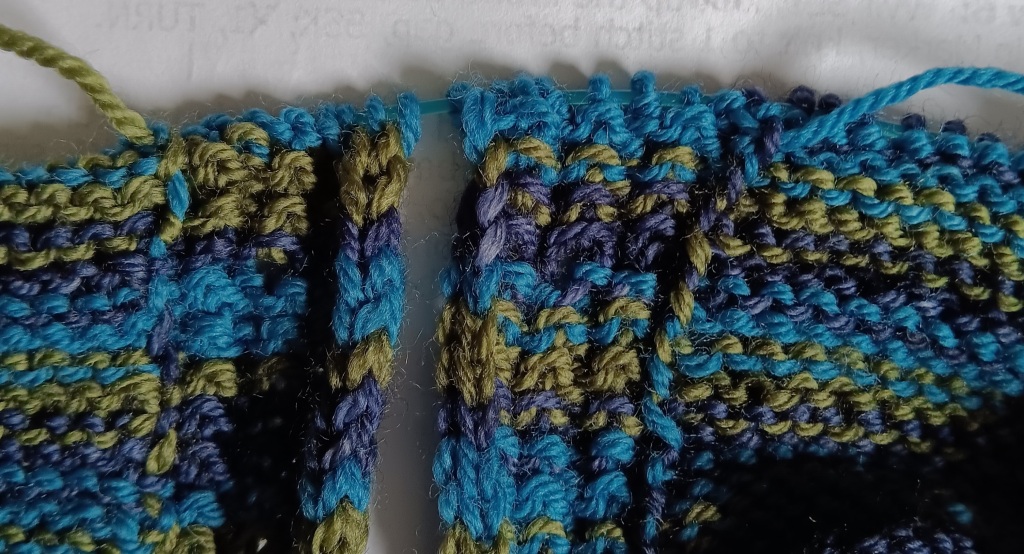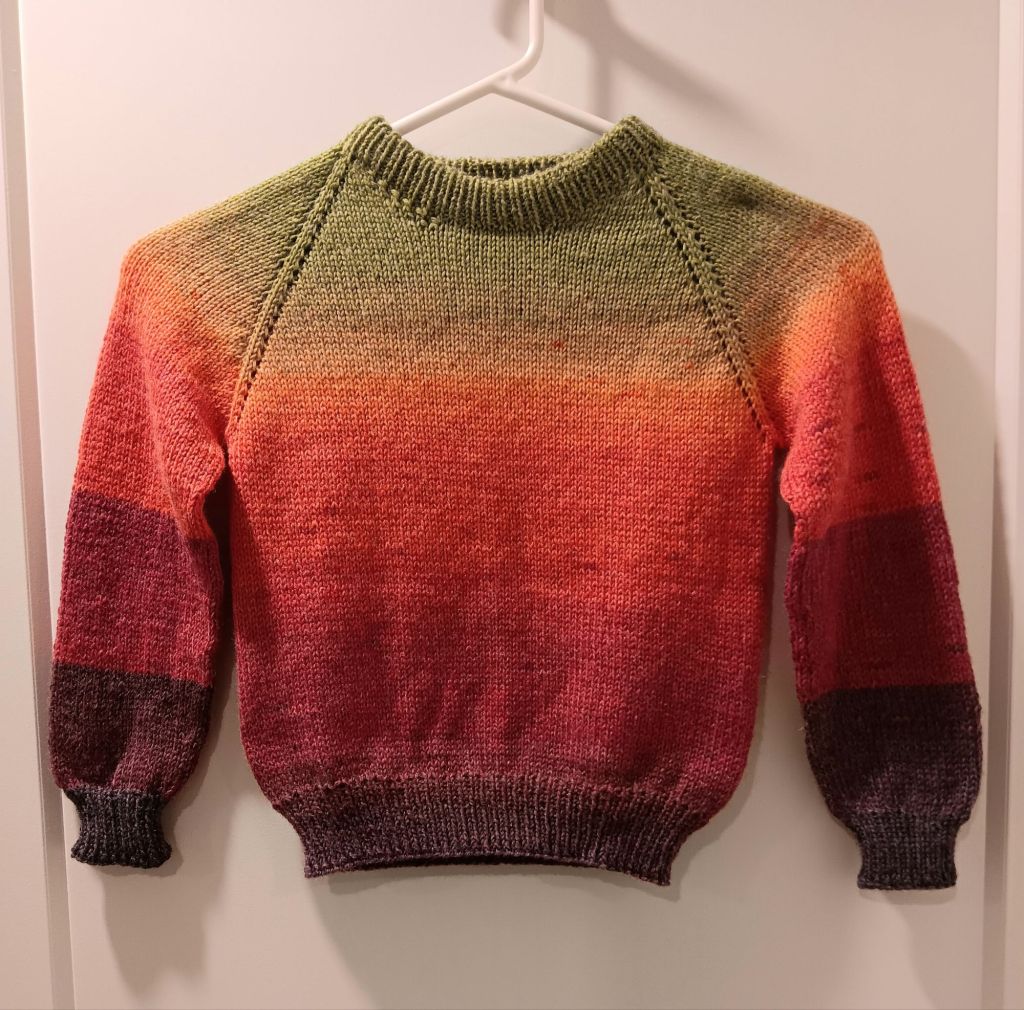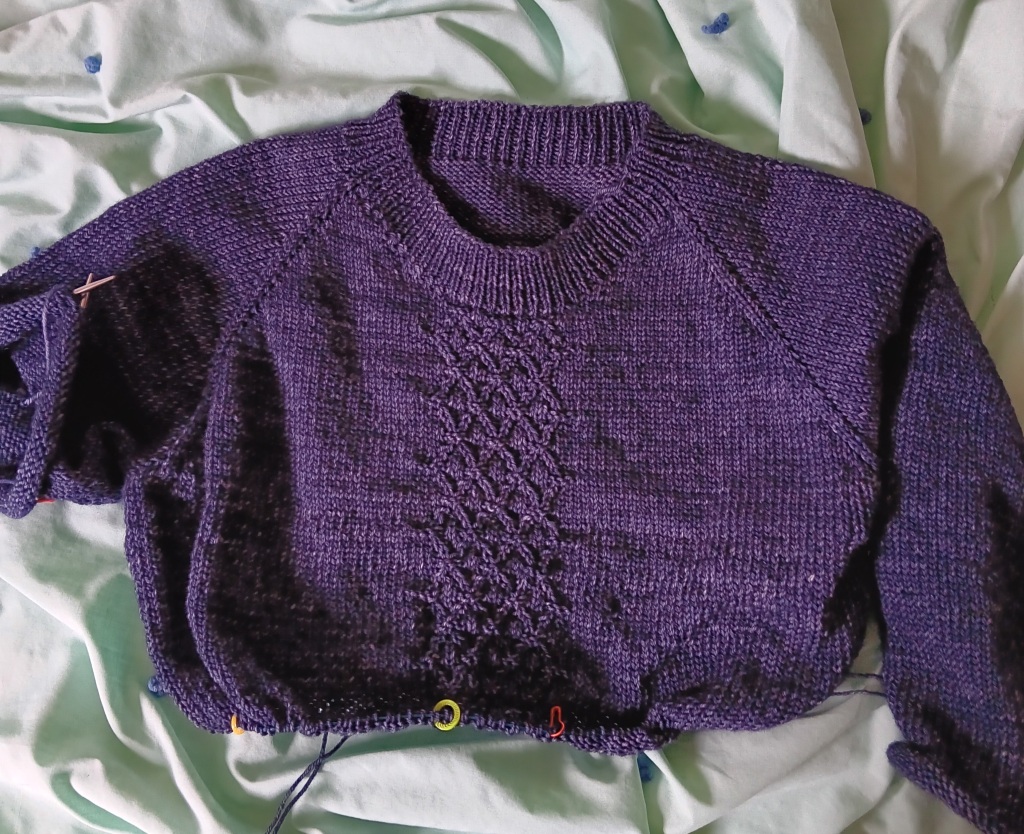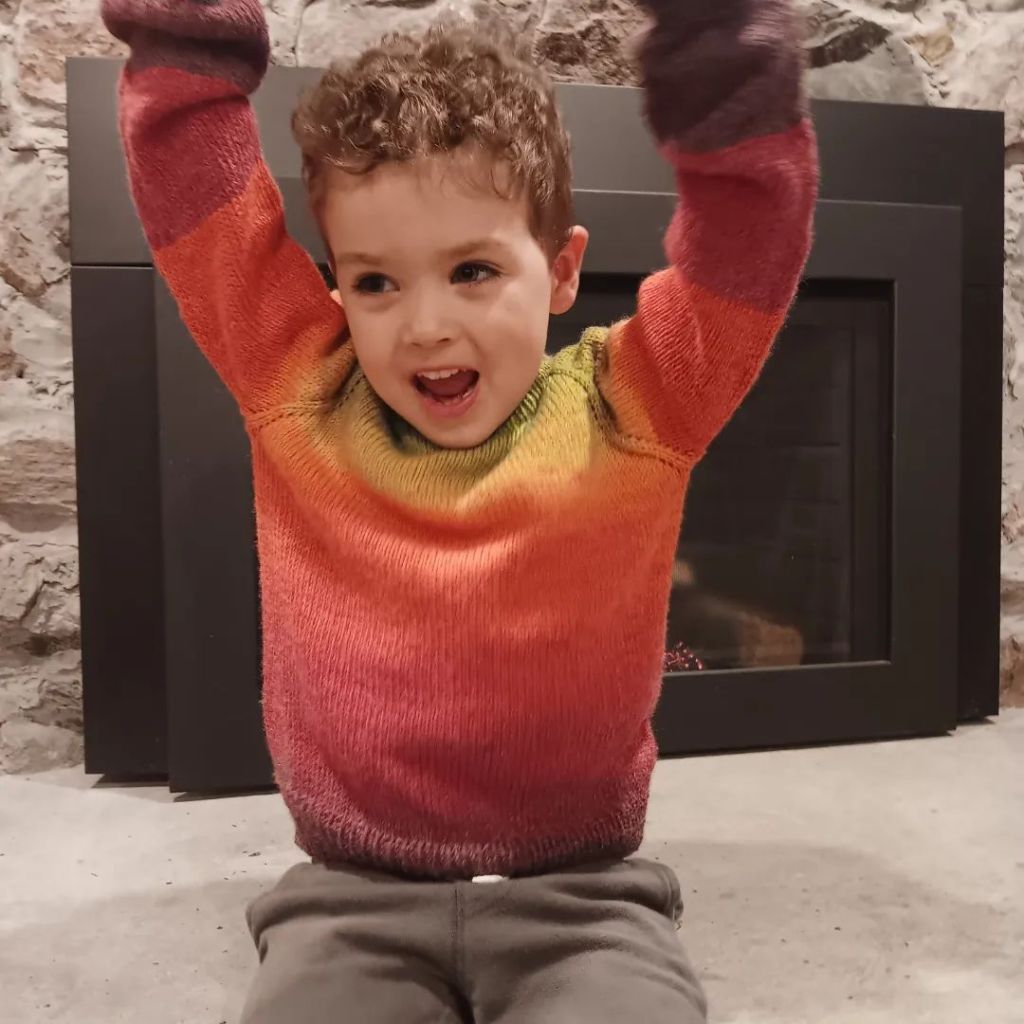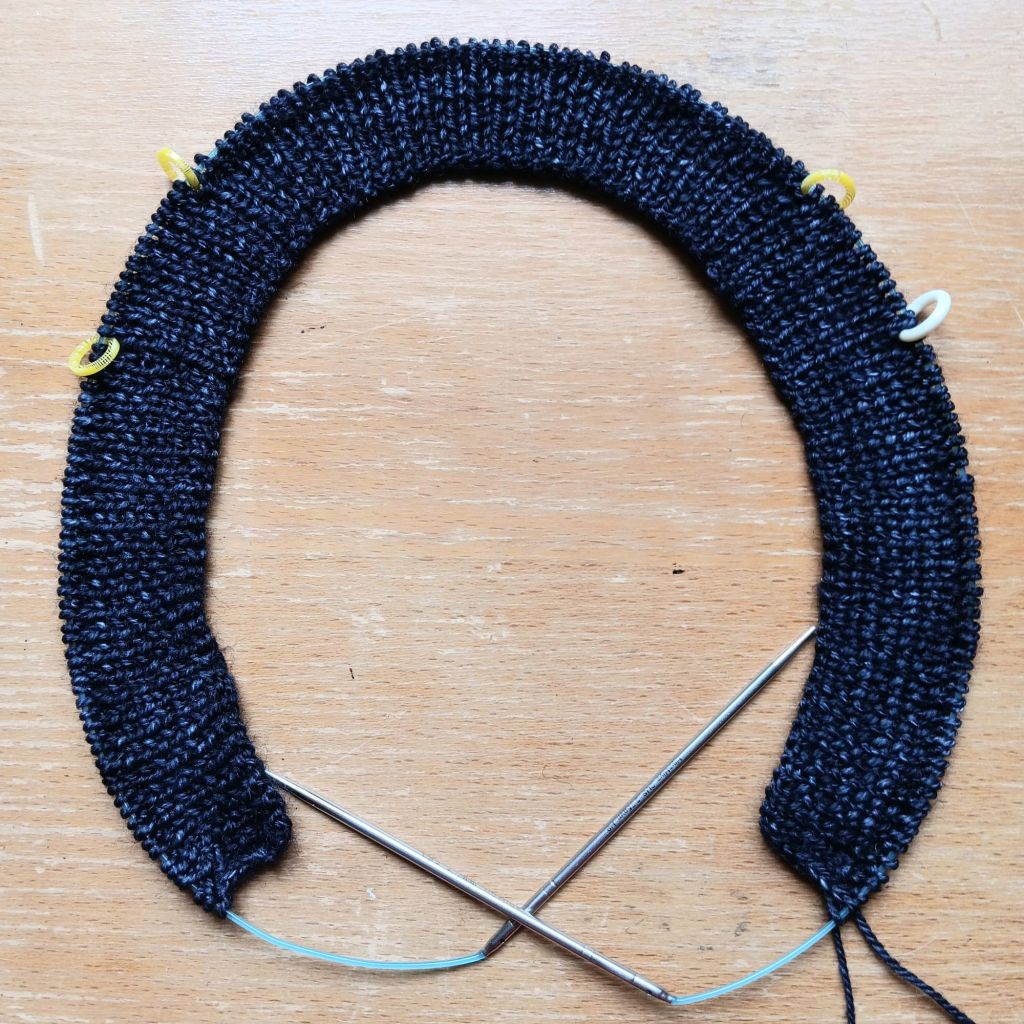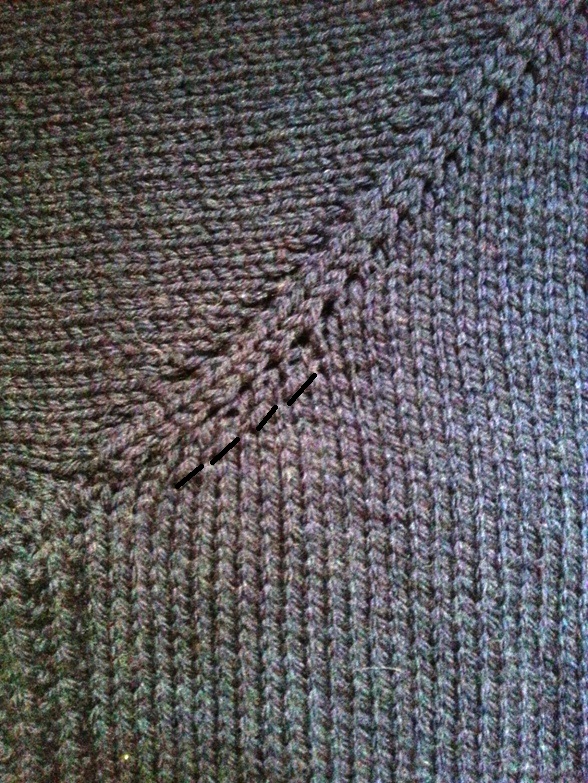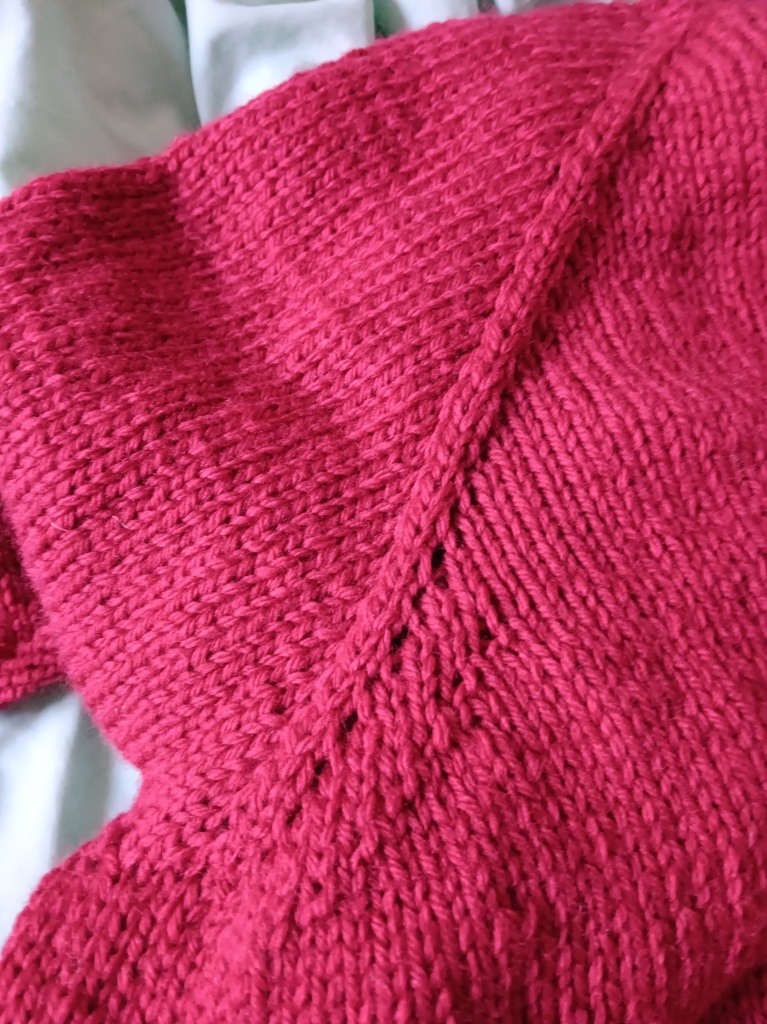Quite often, when I have a deadline, I lose interest in my project. It becomes work and not play. Does this happen to you?
You would think, that giving myself deadlines wouldn’t work this way but it does. I guess, trying to do anything knitting-wise in a hurry is not a good idea. Making knitting fabric is just slow going and trying to move it along faster is frustrating. I also find the same thing with writing patterns. Forcing the writing doesn’t make it go any faster in the long run.
I have been pushing myself to finish this Any Gauge V-Neck Cardigan. Last night I went on a 5 hour Youtube binge to get the last of the sleeves done. I’m tired today but happy to show you it is done, or mostly. I have to sew in ends and find some buttons but the knitting is finished.

But … I bet you saw that coming, the writing is stalled big time.
If I got you started with the V-neck, I bet, with a few photos, you could finish the rest, right? I’m sure you could.

I’m going to give myself a week off, look for some buttons, maybe sew in the ends (that might be a stretch), knit on my socks and see if the writing improves next week. Note to self: having some finished sweater photos would help a lot.
Wish me luck! Deb












